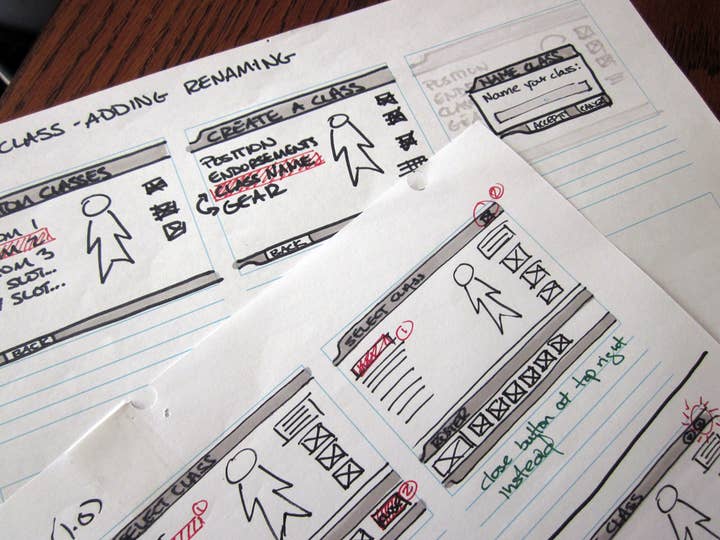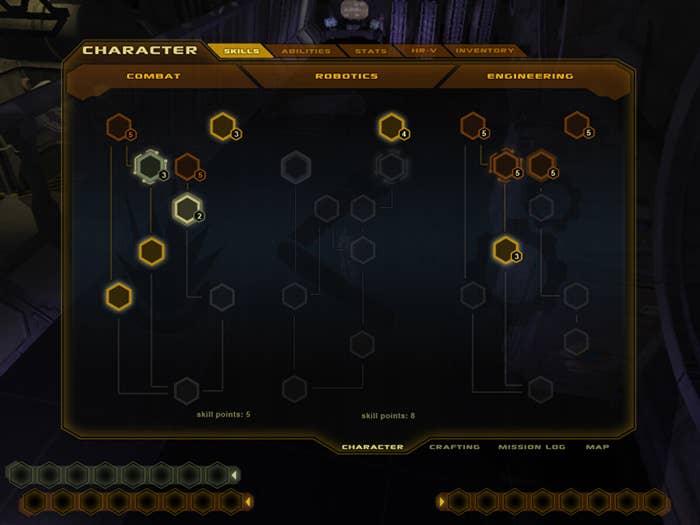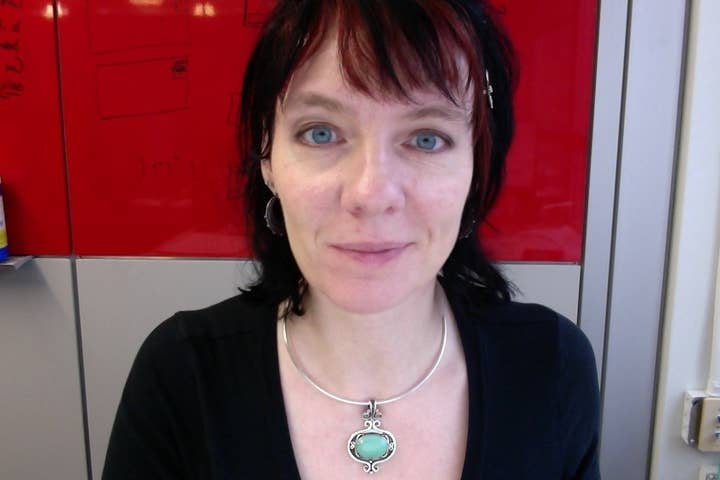Talking Shop: UX/UI Designer
We talk to Z2 UX Designer Caryn Vainio about her corner of the industry
With this year's Game Developers Conference beginning, GamesIndustry International is launching a new column focused on the excellent people within our industry. We'll be talking to them about their specific careers; learning the in-and-outs of their work and digging into their daily lives. We're kicking off this new feature with an interview focusing on industry veteran and Z2 UX designer Caryn Vainio.
Caryn Vainio has been with the industry for more than a decade now. She began on the editorial side running Gamespy's PlanetQuake and later transitioned into the industry as an online marketing manager for Activision. She is currently a UX Designer for iOS and Mac developer Z2 Live, working on their Battle Nations titles. Vainio has also worked on Raven Software's Quake 4, Marvel: Ultimate Alliance, and Wolfenstein; Gas Powered Games' Space Siege and Demigod; and Uber Entertainment's Monday Night Combat and Super Monday Night Combat. Readers can find out more about Caryn and her work at her website.
So how exactly did you join the industry? Did you go to school for something related to game development?
I studied astrophysics, actually. I've been a gamer since I was a kid, back in the earliest Atari console days, and I even learned to program when I was a little kid in order to make my own games. But I never wanted to be a game developer -- I wanted to be an astrophysicist. And an astronaut. When my eye sight turned out to be too bad for the latter career (back before laser surgery was common and inexpensive), I focused on just the astrophysics part.
I got my bachelor's in astronomy & astrophysics and was planning to go to grad school to get my Ph.D. But I was playing a lot of games and doing some game writing on the side for fun, and GameSpy offered me a job running PlanetQuake. At the same time, the funding for my research wasn't renewed and we had to seek new funding sources, and the grad program I was planning to attend decided to cut their physics program, so I decided to take the opportunity, figuring I could come back to science later. I've been having so much fun since that I haven't gone back to science, although I do miss it.
How did you transition into your current career?
I worked at GameSpy for a couple of years, running some of their larger web sites and being responsible for the writing, helping with redesigns, and creating new sites. Then I moved on to Activision, where I was their online community manager for the hardcore shooter titles. When a position opened up at Raven Software for a GUI designer in 2004, I decided to go for it. They hired me, and I've been a UI designer ever since, and most recently have moved into UX design.
Many use UX/UI interchangeably when talking about your work or the work of others like yourself. Are they the same thing?
They aren't the same thing. There are a ton of sites that can explain why, most notably Uxisnotui.com. The two disciplines have a lot of overlap, and that's why people like myself tend to have job titles like UI/UX designer, because we often do both. But user interface design is more like a subset of user experience design, and user experience design doesn't even necessarily ever have to involve UI.

What's your workspace look like? What tools are indispensable for you?
My actual work workspace is dominated by two things: a 27" iMac, and a big sketchpad with all of my colored pens and my set of grayscale markers. The bulk of my work is usually done on the sketchpad first and then on my iMac. My sketchpad, my colored pens, and my grayscale markers are absolutely indispensable to me -- every problem feels like it can be solved when you sit down and sketch it out.
Additional indispensable tools are my scissors, my Post-It notes, and my paper iPhone templates. I do a lot of paper prototyping, so I like using these to make quick paper prototypes that I can put up on the board behind my desk and have people walk through to test them out.
On the iMac, my indispensable tools are Illustrator and Photoshop. And then, since I work on mobile games, my workspace also includes several devices: my work iPod, my work iPad, and my personal iPhone and iPad mini. My iPad mini is definitely pretty indispensable -- I play games on it, I sketch ideas on it, I even do some vector illustration on it.
And finally, Field Test App. It's a web site that lets you make quick mobile prototypes with images you upload. I use this all the time.
In your current position, what does an average day look like for you? How many hours are you at the office (or working period)?
Not all of my work is done at the office -- I have a toddler who goes to daycare, and a husband who also works full-time in the game industry, so we have to manage our work schedules according to our daycare schedule. So I try to get in as early as my toddler and the busses will let me. I use the bus commute in the morning to do all of my social media and news catching-up so that I'm less inclined to do it at my desk. Once I'm at my desk and have my coffee, I'll start getting the latest builds of the games I'm working on loaded onto my mobile devices (our UX team is sometimes working on multiple games).
There's usually a quick meeting or two before lunch, and when it's lunch I tend to grab something quick and eat at my desk, because I have to leave right after 5 pm because of our daycare schedule. So for most of the day, my work will depend on where I am with a particular task. If it's early in a task's timeline, I might be looking at other games for research purposes. Or I might be meeting with the lead designer on the title I'm focused on and getting the information I need to develop the UX flow and wireframes for the task at hand. Or if I've already done that, I might be sketching out notes, UX flows, UI thumbnails, and things like that in my sketchpad -- working out potential ideas, throwing away what seem like bad ideas.
At some point during the day, the UI designer usually has some visual comps based on wireframes I've done for a task in progress, and so we'll spend some time going over them, giving her feedback, and making sure they fit the UX design goals. If I'm past the sketching and early decision-making phase of a task, then I'll usually be creating wireframes and UX flows that can be run by the team for feedback. For UI/UX tasks that might be pretty deep, I might instead opt to create some paper prototypes or wireframe prototypes with Field Test App. If I'm doing those, then at some point during the day I'll usually be found walking around the office with my iPhone or my paper prototypes, grabbing random people in the company kitchen or in the hallways and asking them to do a quick usability test of my UI wireframes.
Just after 5, I have to catch my bus. I tend to use the commute time to finish up any email or IM discussions with people, or maybe sketch out some quick ideas of things I didn't want to let flounder until the next day. I take my work devices home with me, so sometimes I might also spend this time, or the time after my toddler goes to bed, to just play the game I'm working on so that I'm up to date on what the latest build looks like.
Do you find yourself deeply interconnected with the certain divisions in the development team?
UI/UX is something that goes across an entire project, so you definitely have to work with nearly every discipline of a game development team. (I even did a graphic on my site about that) I most frequently work with design and engineering.
Is there a good amount of give-and-take between you and your coworkers? How much leeway in your work do you have: are you given an outline and more autonomy or are decisions from above taken as gospel?
It really depends on each individual task on my list. For some things, the lead designer might have a really strong idea of what he already wants to see, and he just needs someone like myself to make sure that all the mortar and stepping stones are there, and that the details of the resulting experience feels good. So in cases like this, the resulting UX flows and wireframes may look a lot like the notes and sketches he already gave me, but with more polish and details and fringe cases identified.
In other cases, the lead designer wants more help from the UX team to know how to best achieve a good user experience. In these cases, I might spend much more time in the early phases, doing sketches and prototypes that we can look at quickly to see what ideas we do or don't want to pursue.
"The important part of UX design is figuring out what doesn't work before it gets all the way down to the engineers."
Z2's Caryn Vainio
In all cases, I value everyone's feedback across all disciplines during the entire process, because good feedback can come from anywhere. And I feel like our input as UX designers is valued. We're never made to feel like we're being handed dictates -- we may have suggestions from the designers based on their previous experience, and we bring our own ideas to the table as well. The rounds of feedback we do with all stakeholders hopefully makes everyone feel like they're equally contributing.
Is most of your work kept from end-to-end? How much do you throw away during your process?
A lot of my work is actually NOT kept end-to-end, and that's exactly how it should be! I even did a blog article about it. The important part of UX design is figuring out what doesn't work before it gets all the way down to the engineers. It's better for me to spend a day or two of my time with a paper prototype and determining that that doesn't work, than having engineers spend several days of their time implementing something that doesn't work. (We don't always get that right, but that's the goal, anyway.)
But once we do spend some time figuring out the right UX, the UX flows and wireframes I work up are pretty recognizable in the final UI.
What common misconceptions are there about what you do?
Probably the most common is that UX is the same as UI. But, as you can see from the link I included above, there's a lot more to UX design.
What can an aspiring developer do to kickstart their UX/UI experience? Is it better for an aspiring designer to focus on either UX or UI in the beginning?

I actually wrote a five-part article about getting into the game industry as a UI designer.
I'm planning to add a sixth part on how UX design fits into the game industry, and how to move into UX design if you're a UI designer. It boils down to this: start with UI design and build up your graphic design skills. Work on things like redesigns of game UI. Make small games with things like Gamemaker or Unity and make a game with a great UI. Then work on your UX skills: sketch out UX flows for your game's UI and the player experiences; do some surveys online with people to get data on how they might interact wit your product; sketch some more; translate those sketches and that data into paper or on-device prototypes, and have people test them. Put all of this into a portfolio and you've got yourself some UX experience.
If you were hiring a new UX/UI designer, what would you look for in their resume or portfolio?
I need to see your thought and design process. The end product doesn't tell me how you arrived at it, and I want to see that you're good at exploring multiple angles, and that you're okay with discarding work if it isn't the right avenue. Although a lot of people think they aren't good at drawing or sketching, I'm a huge fan of seeing sketch work in a UI/UX designer's portfolio -- sketches are the most raw, quick, and cheap way to explore ideas. And I want to see prototypes! Being able to prototype is absolutely critical in UI/UX design.

